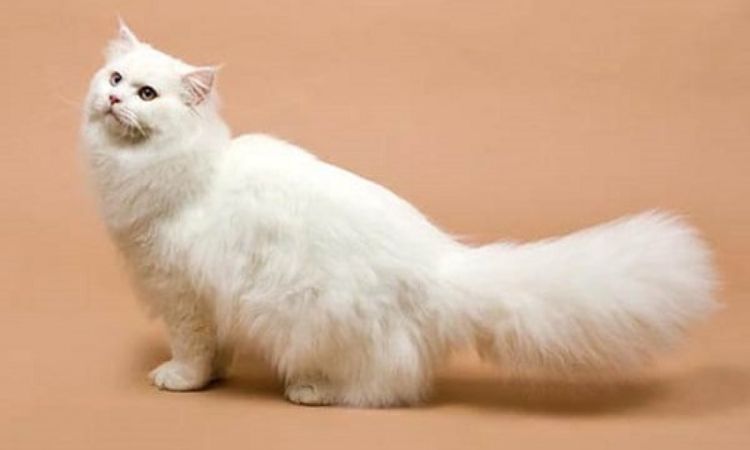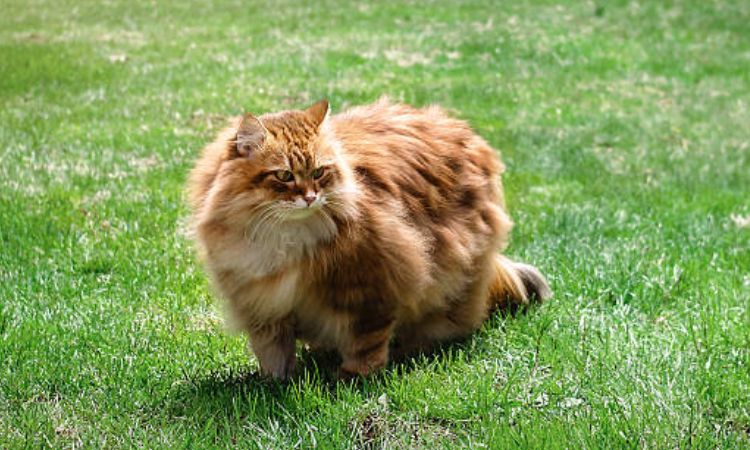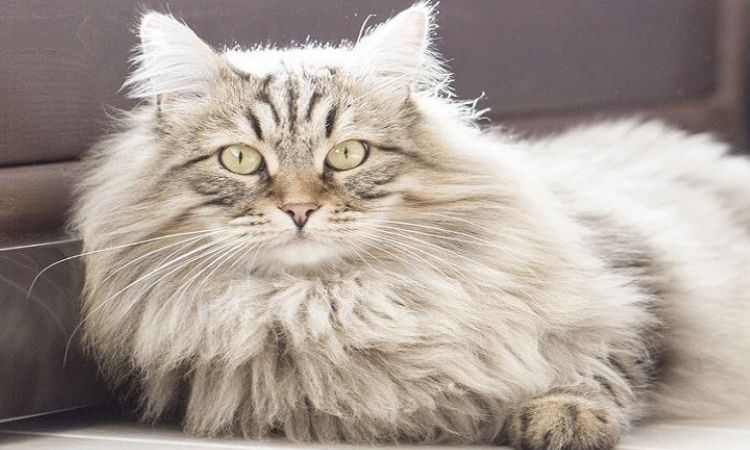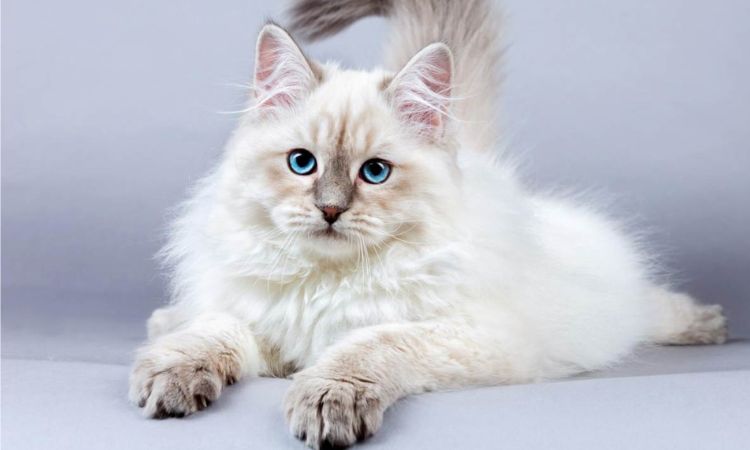The Siberian cat, known formally as the Siberian Forest Cat, is a stunning long-haired breed steeped in Russian history and folklore. Sometimes called the Moscow Semi-Longhair or Russian Longhair in the past, this majestic feline stands out with its thick, luxurious coat and playful personality.
Often confused with the Russian Blue, the Siberian offers a unique blend of beauty and charm. Explore with Nexus-pets the fascinating world of the Russian Long-Haired cat, along with a helpful guide on pricing and ownership.

What is a Russian Long Hair Cat?
The term Russian Long Hair Cat is not officially recognized as a standard breed in most major cat registries. However, it is often used informally to refer to long-haired variants or mixes of traditional Russian breeds—especially the Russian Blue. This has led to some confusion among cat enthusiasts and adopters.
Breed Description and Origins
- The Russian Blue is a well-established, naturally occurring breed from Russia, known for its short, dense, and shimmering blue-gray coat.
- Long-haired versions of the Russian Blue are not standard but may appear due to crossbreeding or natural mutations.
- Some unofficial or mixed-breed cats with similar features and longer coats are sometimes marketed as “Long-Haired Russian Blues” or “Russian Long Hair Cats.”
Distinction Between Russian Blue and Long-Haired Russian Blue
- Russian Blue (standard):
- Short, plush double coat with a silvery sheen
- Lean, elegant body with vivid green eyes
- Recognized by major registries like CFA, TICA, and FIFe
- Long-Haired Russian Blue (unofficial or mixed):
- Longer, semi-plush coat resembling a Nebelung (see below)
- May not meet breed standards for Russian Blue
- Often affectionate and visually similar, but not recognized as a pure Russian Blue
Note: A breed known as the Nebelung resembles a long-haired Russian Blue and is officially recognized in some registries. It was developed in the U.S. in the 1980s by crossing Russian Blues with long-haired cats.
Related Breeds: Russian White, Russian Black, and Others
- These are recognized color variants of the Russian Blue, selectively bred to maintain the same elegant build, eye color, and coat texture:
- Russian White – pure white coat
- Russian Black – solid black coat
- Russian Tabby (less common) – with classic tabby markings
Each of these maintains the short-haired, dense, and plush coat typical of the Russian Blue breed family.
Clarification: Long-Haired Russian Blue is Rare
- Russian Blue cats are defined by their short, dense coats.
- Any long-haired version is either:
- A Nebelung (recognized separately), or
- A non-standard or mixed-breed cat, sometimes mislabeled

Personality and Temperament
Russian Blue cats including the rare long-haired variety are beloved for their calm, intelligent, and affectionate nature. These cats are ideal companions for individuals, couples, and families alike, especially when raised in a nurturing, consistent environment.
- Reserved but loyal: While they may be shy or cautious around strangers, Russian Blues form strong bonds with their chosen humans. Once they trust you, they are incredibly loyal and often shadow you around the house.
- Highly intelligent: These cats are quick learners and curious observers. They enjoy interactive toys and puzzle games and can even be trained to perform simple tricks or follow routines.
- Affectionate on their terms: Russian Blues are not typically clingy, but they do love companionship. They often prefer quiet cuddles and will sit near you rather than on you, enjoying your presence without being overly demanding.
- Family-friendly: With proper socialization, they get along well with respectful children and other pets, especially calm dogs or fellow cats. Their gentle nature makes them a good fit for peaceful households.
- Playful but not hyperactive: They have bursts of energy and enjoy chasing toys, but they’re not wild or destructive. After playtime, they often retreat to cozy corners for quiet naps.
- Well-suited to indoor life: Russian Blues adapt beautifully to apartment living. They appreciate routine, a peaceful environment, and a few safe spots to perch or hide when they want quiet time.
Note: The long-haired variant sometimes identified as the Nebelung typically shares the same temperament: gentle, graceful, and quietly devoted.

Price Guide for Russian Blue and Long-Haired Variants
When considering a Russian Blue or its rare long-haired counterpart, it’s important to understand the costs involved. These elegant, intelligent cats can vary significantly in price depending on several key factors.
Typical Price Range
Russian Blue kittens generally cost between $500 and $4,000. The lower end usually includes pet-quality kittens from local breeders, while top-tier, show-quality cats from prestigious breeders command higher prices.
Short-Haired vs. Long-Haired Russian Blues
The traditional Russian Blue has a short, dense, silver-blue coat. Long-haired variants—often confused with related breeds like the Nebelung—are much rarer and may cost slightly more due to their scarcity and the breeder’s specialized lines.
What Influences the Price?
Several factors contribute to the final cost:
- Pedigree: Cats with champion bloodlines or registered with official breed associations are typically more expensive.
- Breeder Reputation: Trusted breeders who provide health guarantees, early socialization, and proper veterinary care may charge more, but offer peace of mind.
- Location: Prices vary by region—expect higher costs in major cities or countries with fewer breeders. For example, a kitten in the U.S. may cost $1,200–$2,000, while in Europe or Australia, prices can exceed $3,000.
- Age & Health: Kittens are often more expensive than adult cats. Those already vaccinated, dewormed, or neutered/spayed may also carry higher price tags.

Additional Costs to Expect
Beyond the purchase price, be prepared for:
- Vaccinations & Vet Checks: $100–$300 initially
- Microchipping: $50–$100
- Spaying/Neutering: $150–$300 (if not already done)
- Routine Care: Food, grooming supplies, litter, and annual checkups can cost $500–$1,000 annually
Choosing a Russian Blue or long-haired variant is an investment in a loyal, graceful companion—just be sure you’re financially ready for the full commitment.
In essence, the long-haired Russian Blue, while not a distinct breed, is a charming and enigmatic feline. Their striking appearance and gentle nature make them captivating companions. For those considering bringing one home, responsible breeders are key. These beautiful cats promise years of quiet affection and graceful presence.






